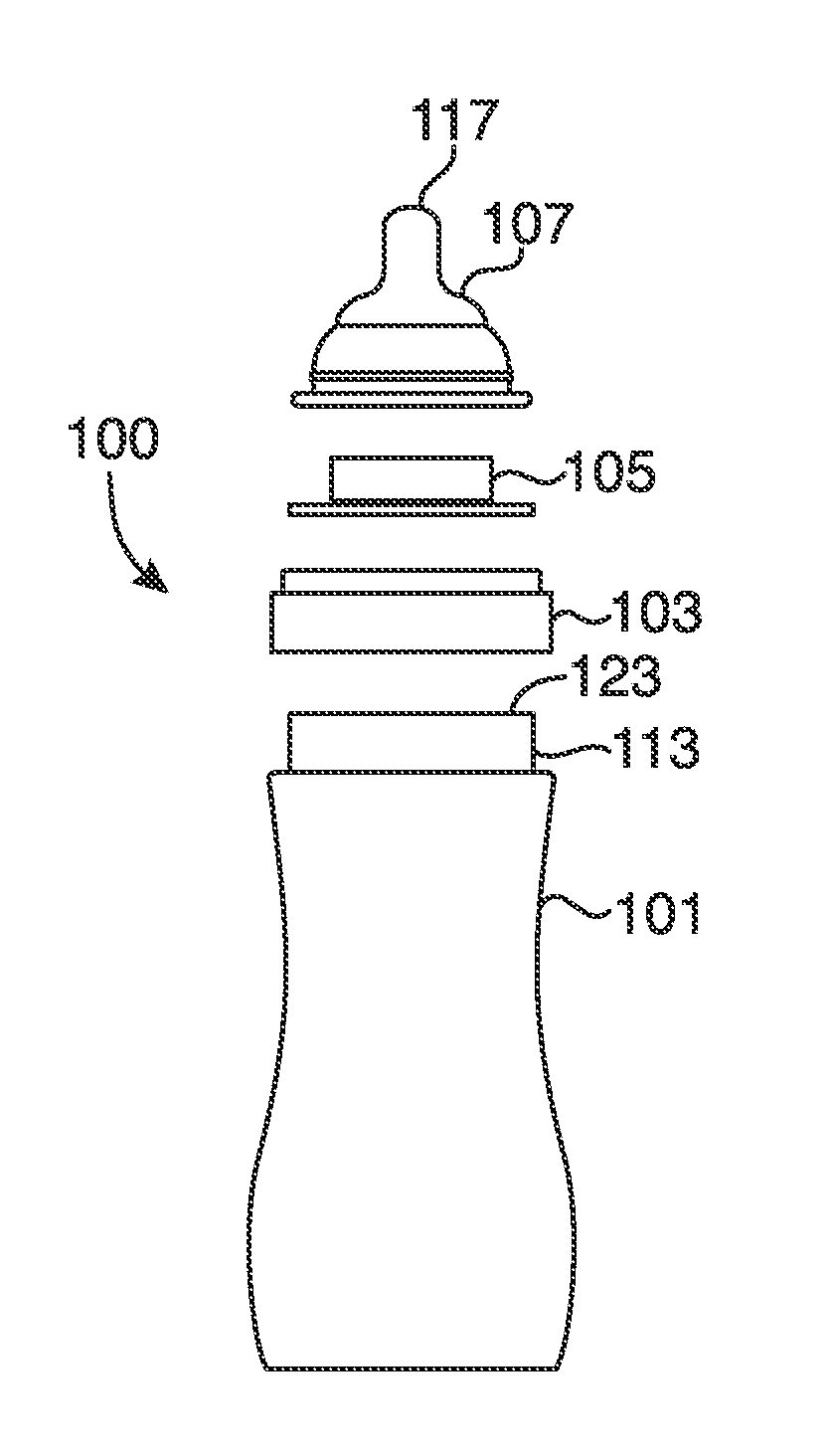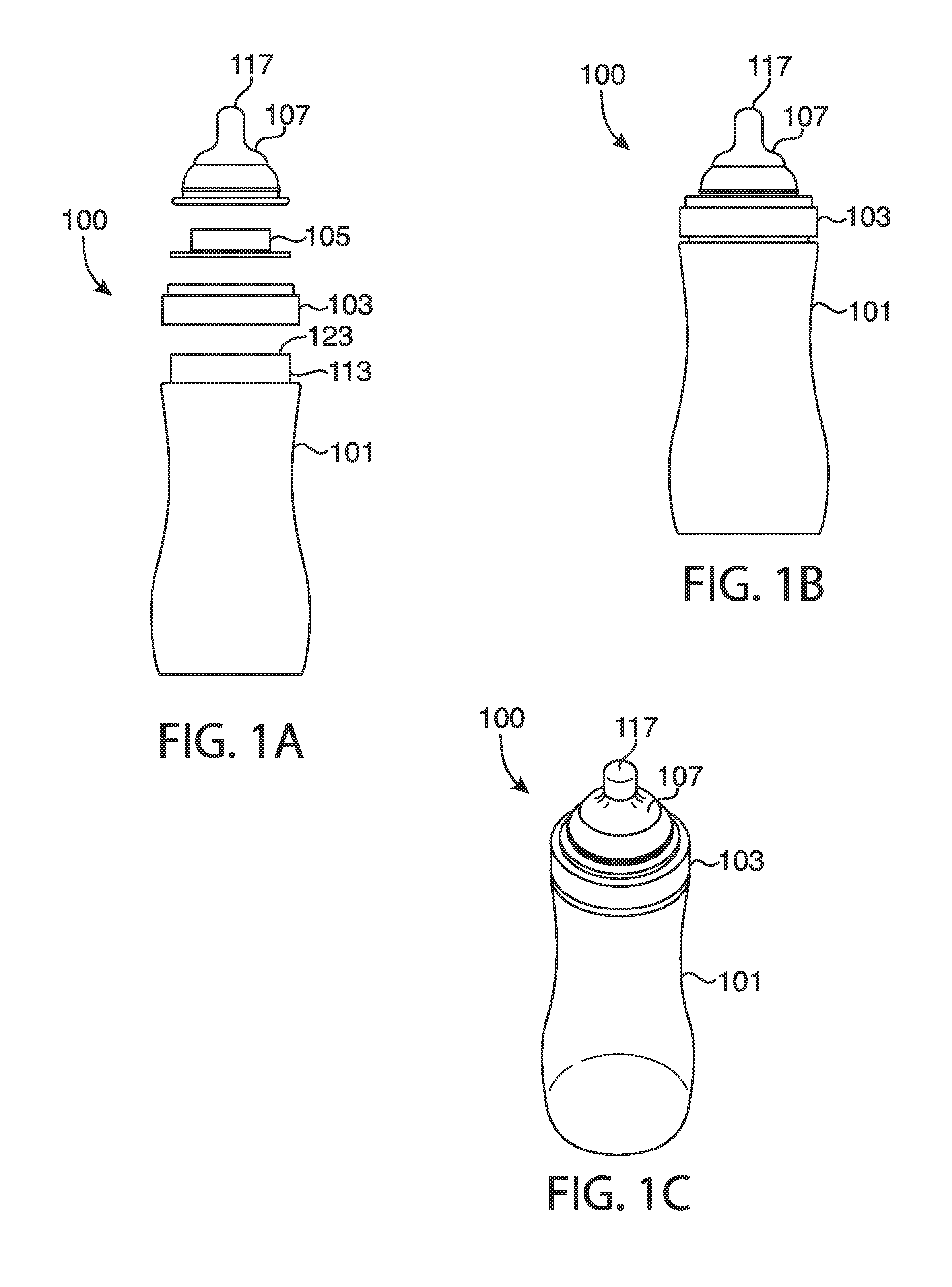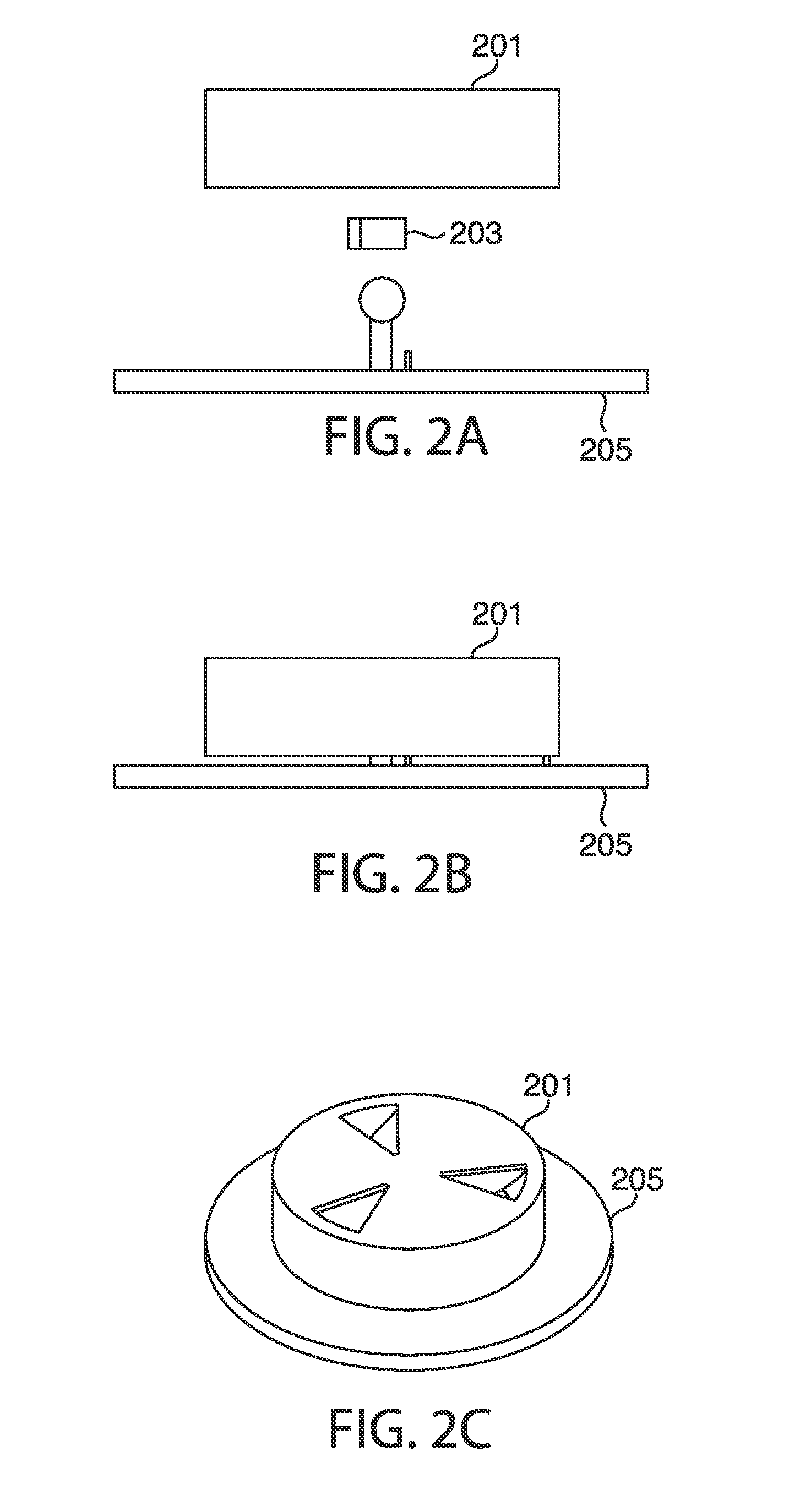Automatic Pacing System for a Baby Bottle
a technology of automatic pacing and baby bottles, which is applied in the directions of transportation and packaging, thin material handling, teats, etc., can solve the problems of increased medical expenses, trouble learning how to eat, and infants getting too large to be easily delivered
- Summary
- Abstract
- Description
- Claims
- Application Information
AI Technical Summary
Benefits of technology
Problems solved by technology
Method used
Image
Examples
Embodiment Construction
)
[0039]The following detailed description and disclosure illustrates by way of example and not by way of limitation. This description will clearly enable one skilled in the art to make and use the disclosed systems and apparatus, and describes several embodiments, adaptations, variations, alternatives and uses of the disclosed systems and apparatus. As various changes could be made in the above constructions without departing from the scope of the disclosures, it is intended that all matter contained in the above description or shown in the accompanying drawings shall be interpreted as illustrative and not in a limiting sense.
[0040]A normal NICU feeding bottle contains about 30-90 milliliters of solution in a generally cylindrical bottle (100) as shown in FIG. 1. While there is some variation among baby bottles, those used in any particular NICU are generally of a particular type and most are broadly similar. It is preferable that the feeding control be provided without needing to f...
PUM
 Login to View More
Login to View More Abstract
Description
Claims
Application Information
 Login to View More
Login to View More - R&D
- Intellectual Property
- Life Sciences
- Materials
- Tech Scout
- Unparalleled Data Quality
- Higher Quality Content
- 60% Fewer Hallucinations
Browse by: Latest US Patents, China's latest patents, Technical Efficacy Thesaurus, Application Domain, Technology Topic, Popular Technical Reports.
© 2025 PatSnap. All rights reserved.Legal|Privacy policy|Modern Slavery Act Transparency Statement|Sitemap|About US| Contact US: help@patsnap.com



